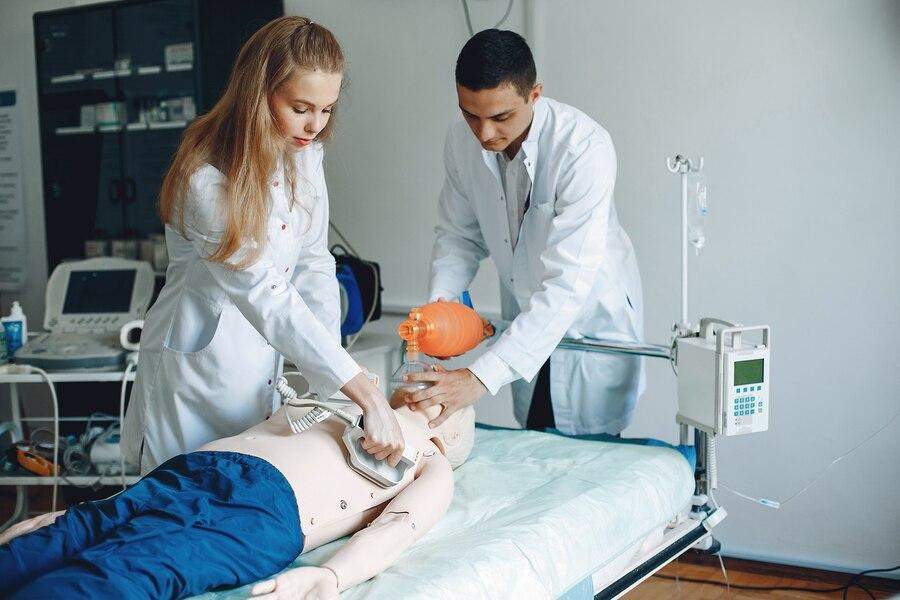A Comprehensive Guide to Advanced Surgical Simulators
In the rapidly evolving landscape of medical education, the integration of cutting-edge technologies has become instrumental in enhancing the training and proficiency of healthcare professionals. One such groundbreaking development is the use of surgical simulators, designed to replicate real-life surgical scenarios and provide invaluable hands-on experience for medical practitioners. This article explores the realm of surgical simulation, focusing on key innovations like laparoscopy simulators, cataract surgical simulators, vitreo-retinal surgical simulators, otoscope simulators, slit lamp simulators, and neonatal simulators.
1. Introduction to Surgical Simulators: Surgical simulators have emerged as pivotal tools in medical education, bridging the gap between theoretical knowledge and practical skills. These simulators utilize advanced technologies to recreate surgical environments, offering trainees a risk-free space to refine their techniques and decision-making abilities.
2. Laparoscopy Simulator: Laparoscopic surgery, with its minimally invasive approach, requires precision and dexterity. A laparoscopy simulator provides a virtual platform for trainees to practice laparoscopic procedures, offering realistic visuals and haptic feedback. This hands-on experience is crucial for mastering techniques like trocar insertion, instrument manipulation, and camera navigation.
3. Cataract Surgical Simulator: Cataract surgery demands precision and finesse. A cataract surgical simulator allows ophthalmology students and practitioners to practice phacoemulsification and intraocular lens implantation in a controlled environment. This simulator assists in honing skills and managing complications, contributing to increased surgical competence.
4. Vitreo-Retinal Surgical Simulator: The intricacies of vitreo-retinal surgery require specialized skills. A vitreo-retinal surgical simulator provides a platform to practice procedures like retinal detachment repair and vitrectomy. Trainees can navigate through complex scenarios, gaining confidence in managing various retinal pathologies.
5. Cataract and VRT Surgical Simulator: Combining the features of cataract and vitreo-retinal surgical simulators, this innovative tool offers a comprehensive training experience. Trainees can seamlessly transition between cataract and vitreo-retinal procedures, enhancing their versatility and preparedness for diverse surgical challenges.
6. Otoscope Simulator: For ear examination and diagnostic purposes, otoscope simulators are invaluable. These simulators replicate the anatomy of the ear, allowing medical professionals to practice ear examinations, identify abnormalities, and develop proficiency in ear-related procedures.
7. Slit Lamp Simulator: Ophthalmologists and optometrists benefit from slit lamp simulators, which replicate the examination conditions provided by a traditional slit lamp. Trainees can practice using the slit lamp for detailed ocular examinations, gaining expertise in assessing eye health and identifying potential issues.
8. Neonatal Simulator: The neonatal simulator serves as an essential training tool for healthcare providers involved in the care of newborns. This simulator mimics various neonatal conditions and scenarios, enabling practitioners to refine their skills in neonatal resuscitation, intubation, and other critical procedures.
9. Key Benefits of Surgical Simulators:
- Risk-Free Learning: Simulators provide a risk-free environment for trainees to learn and refine their skills without the pressure of real-life consequences.
- Repetition and Mastery: The repetitive nature of simulator practice allows for skill mastery, enabling trainees to build muscle memory and confidence.
- Scenario Customization: Simulators offer the flexibility to customize scenarios, ensuring that trainees are exposed to a wide range of surgical situations.
- Objective Assessment: Simulators often come with performance metrics, allowing objective assessment of trainee proficiency and progress.
10. Future Trends and Innovations: As technology continues to advance, the landscape of surgical simulation is poised for further innovation. Virtual reality (VR) and augmented reality (AR) are increasingly being integrated into simulators, offering an even more immersive and realistic training experience. Additionally, the development of AI-driven simulators holds promise for personalized and adaptive learning experiences.
Conclusion: In the realm of medical education, surgical simulators stand as transformative tools, providing a bridge between theory and practice. From laparoscopy to neonatal care, these simulators play a pivotal role in shaping the next generation of skilled and confident healthcare professionals. As technology evolves, so too will the capabilities of these simulators, ensuring that medical training remains at the forefront of innovation and effectiveness. The future of surgical education is undoubtedly one where simulation takes center stage, revolutionizing the way healthcare professionals prepare for the challenges of the operating room.
For more information please visit here: https://www.mavericsolution.com/




Comments
Post a Comment